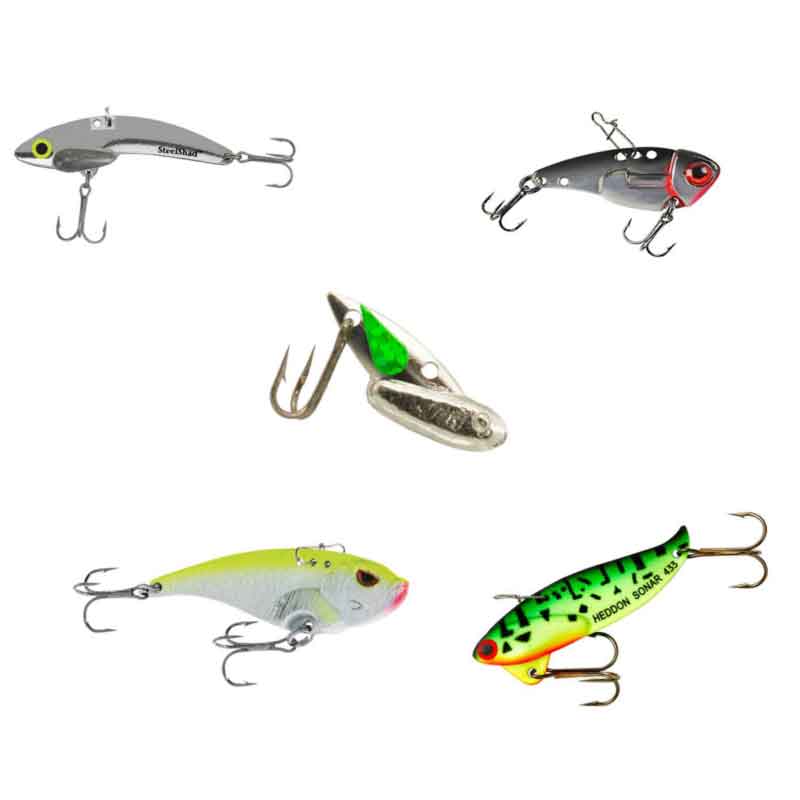Trends come and go in fishing, and every year new fishing gear comes out that offers something different for the fish to like as older lure styles go out of fashion. Much like the cyclical nature of fish, lures that anglers no longer use can come back and work just as well as they used to, sometimes even better than the first time around. One older lure that I find myself using more and more is a blade bait. My experience seeing other anglers use blade baits has been limited to vertical jigging for walleye in northwestern Pennsylvania and watching ice fishing videos. But I must admit that I saw those guys catch a lot of fish. Additionally, YouTube has revealed the return of blade baits as well as their usefulness for largemouth bass in the winter and very early spring.

In my quest for fish in the Chesapeake, I wanted something I could cast under docks, could be worked at a short distance, and could stand up to the punishment of hitting wooden planks and pilings. Though they fill two of those three criteria, I have cracked too many Rat-L-Traps to count, which gets expensive. However, metal blade baits are much more durable when whacked against a dock. They also have a faster sink rate than a lipless crankbait because of the compact design, and provide a tremendous amount of vibration — which gets fish to bite.
I started fishing blade baits with a 1/8-ounce Reef Runner Cicada with an ice fishing rod right next to docks, sometimes going underneath them in my kayak. I would cast the lure out and let it sink to the bottom, then crank three times and open the bail to let it sink again; repeat until the lure came back to the boat or the rod bent over from a strike. I took a similar approach when fishing off docks for white perch. The Cicada is not limited to fishing vertically or over short distances. You can cast it out, let it sink to the bottom, and retrieve it by lifting the rod tip and feeling the vibration; let it drop, reeling in the slack if you don’t get a bite and then rinse and repeat. Oftentimes the fish will hit on the fall, because the bait continues to wobble as it sinks.
Of course, there are many styles of blade baits, with a multitude of sizes and color patterns. The Heddon Sonar was the favorite of the walleye anglers I mentioned earlier. My personal favorite is the Steelshad. It is very compact and has a tremendous amount of vibration. In my opinion, the Steelshad covers all the bases: you can cast it out and retrieve it like a lipless crankbait, troll it behind a boat or kayak, jig it vertically in deep water, or cast and lift to retrieve. I’m working my way through the Chesapeake slam for species caught on a Steelshad and so far, have caught white perch, stripers, pickerel, and croaker. It’s only a matter of time before I find a pack of schoolies with a bluefish mixed in, and possibly a Spanish mackerel. I’m confident specs and redfish will also go for them too.
A 1/8- or 1/4-ounce blade bait is perfect for fishing in the shallows and up in creeks. For trolling or vertical jigging out in the deeper water, I recommend using something in the 1/2- to 3/4-ounce size, or even bigger if you can find them. They come in all manner of colors to help you match the hatch. Here are a couple of tips to get the most out of your blade baits:
- Add a split ring or use a snap swivel. Some blade baits come with split rings, but others don’t. Tying your line directly to the metal is a good way to cut yourself off. Also, having a ring or swivel will provide more movement when you work the lure.
- Change out the hooks. The factory hooks on these lures are generally flimsy. I recommend switching them with something stronger. Single hooks can be good for bigger stripers and bluefish, though trebles hook just about anything they touch. I generally choose a bigger hook for the front, with turned-in points for better hookup ratios. I also prefer to use a red hook in the front. Fish seem to key in on red, like it is blood from an injured baitfish, and often hit the front hook when they ambush from below.
- Vary your retrieves. One of the main reasons to use this lure is to give the fish a different look. They might be tired of the rattle of a lipless or stick bait, or the flash of a Beetle Spin. Blade baits flash and vibrate at different rates based on your retrieve. A short pop will throw out a quick vibration that triggers strikes, and will pull the lure through underwater vegetation. A slow steady retrieve offers a different vibration that can bring fish in from a distance.
- Drop back. If you feel fish short striking or hitting the lure, but are not getting hooked up, let it sink back down. Blade baits wobble as they sink, and that action can trigger a reaction bite.
If you’re having trouble catching fish on the same lure every trip, it might be time to throw a change-up. Pick up a blade bait and show the fish something “new” to get them going.
-By Peter Turcik